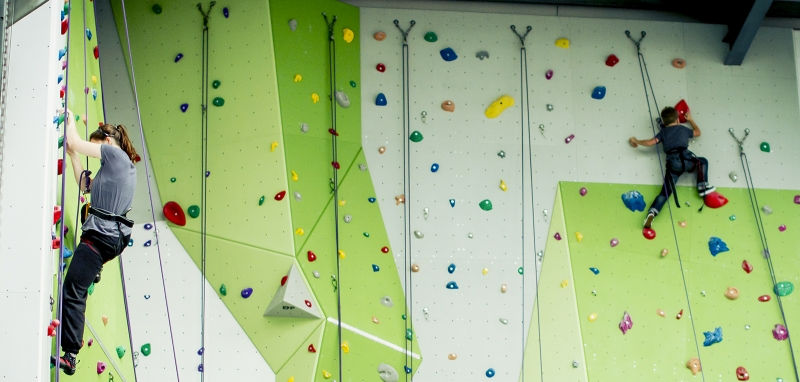Top roping is without doubt the safest and easiest to learn of the two methods used in indoor climbing where a rope is required for safety (the other being “lead climbing”).
While top roping indoors (here at The Boardroom the top rope walls are the green wall) the rope which is always in place, runs smoothly through an anchor* at the top of the wall, with both ends of the rope reaching down to the floor. The climber ties into one end and the belayer attaches to the other.
As the climber ascends the wall the belayer takes in the rope ensuring there is no slack rope between themselves, the anchor and the climber. Should the climber fall off, the belayer prevents the climber from dropping by locking the rope in the belay device.
Because the rope passes through the anchor at the top of the wall, the climber is supported by the rope from above, despite the belayer being on the ground. This is why it is called “top roping”; the rope is always at the top, above the climber. This ensures that any fall a climber takes results in them falling no distance at all.
* In indoor climbing the anchor at the top of the wall consists of two karabiners attached to the wall structure via steel chains and bolts. The rope runs through the karabiners.
Indoor climbing wall anchors are weight tested on site to ensure they can hold 800kg
